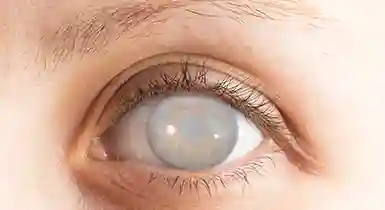What is Cataract?
A cataract is a cloudy area in the normally clear lens in the front of the eye. Cataracts are caused by a chemical change in the eye, and cause blurred or distorted vision. People at a risk for developing cataracts are over 55 years old, have had eye injuries or disease, have a family history of cataracts, smoke cigarettes or use certain medications.
What are the symptoms of Cataract?
- There is no pain associated with the condition, but there are several symptoms that indicate failing vision due to cataracts. These include:
- Blurred/hazy vision
- Spots in front of the eye(s)
- Sensitivity to glare
- A feeling of “film” over the eye(s)
- A temporary improvement in near vision
What is phacoemulsification?
Cataract surgery removes the natural cloudy lens from the eyes and replaces with artificial lens. Phaco means lens and Emulsifying means to break into pieces.
Today, phacoemulsification is performed as an outpatient basis, under local anaesthesia or “eye drop” anaesthesia.
The surgery entails the removal of the natural cataractous lens which is opaque and replacing it with an artificial clear lens, called an Intraocular lens (IOL). The most popular technique for cataract surgery is Phacoemulsification (“phaco” meaning lens and “emulsify” means to break into pieces). Cataract surgery is customized, we make the surgery personalised as per each individual eye needs
What are the different types of intraocular lenses?
It is an artificial lens that is implanted during cataract surgery. It is made up of acrylic material and can be folded and inserted into the eye. Once inside the eye, the IOL unfolds to its original size and shape.
- Aspherical lenses ensure aberration free image which gives better vision and enhances contrast sensitivity, thus better night vision and under low light conditions.
- Square Edges: These lenses have square edges have square edges which prevent the lens capsule from thickening, thus reducing the chances of after cataract
- Monofocal IOL: Distant vision becomes clear but has to wear spectacles for near vision. These are standard IOLs implanted in the eye after cataract surgery for correction of distance vision only.
- Toric IOL: It corrects conical astigmatism so it improves quality of vision in patient with high astigmatism (Cylinder power). These are monofocal IOLs implanted in patients with pre-existing astigmatism and cataract. Provides spectacle free vision even when patients had astigmatism before surgery. Most commonly used is the Toric IOL.
- Multifocal IOL: It improves distant intermediate & near vision.
- Specialized IOLs. Patients are totally free of glasses for distance, intermediate and near vision for all routine purposes.
Our Ophthalmology department at Wockhardt Hospital conducts Overall Eye Assessment Procedures and diagnosis the conditions like Cataract, Contact lens clinic, retinal disorders, Glaucoma clinic, and Squint & Paediatric ophthalmology. Depending on the various diagnostic modalities, surgical interventions are planned for various ophthalmic cases.
Wockhardt Hospitals has state-of-the-art infrastructure. Our prime objective is patient safety and quality of care at all levels. The guiding philosophy is to serve and enrich the Quality of Life of patients and to make life win.




